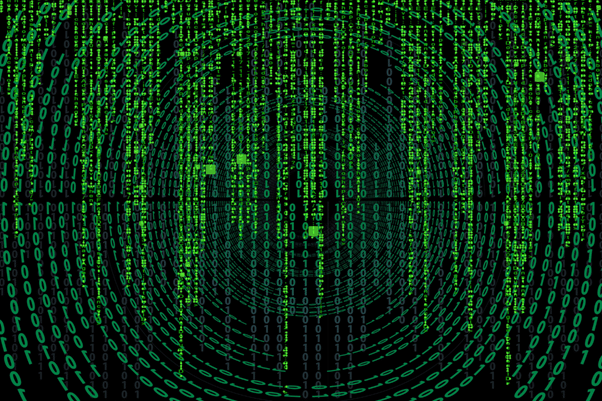Despite the blockchain industry having evolved immensely over the past decade, one of the most significant hurdles facing developers and innovators in this space has been the limited variety of decentralized data available on-chain. This constraint has had far-reaching implications, making it challenging to build decentralized applications (dApps) that can meaningfully impact people’s daily lives.
To elaborate, most blockchain networks today tend to operate in isolation from the external world, creating a data vacuum that severely restricts the types of applications that can be built while also resulting in a scarcity of diverse, real-world data available on-chain. This seclusion is a double-edged sword because while it ensures security and immutability, it also limits the blockchain’s ability to interact with and reflect the real world.
Moreover, it forces many of DeFi’s existing use cases to be focused on financial speculation, hindering broader adoption of blockchain tech while also limiting its potential to transform industries beyond cryptocurrency trading and investing.
Bridging the Data Gap, One Step at a Time
Recognizing the critical need for truly decentralized, real-world data on blockchain networks, several projects have emerged recently. For instance, The Graph focuses on indexing and querying blockchain data. By allowing developers to create information sets that define how to pull and organize data from various blockchains, it helps improve the efficiency and usability of today’s dApps.
Similarly, the Band Protocol provides scalable cross-chain data oracles by aggregating and verifying data from multiple sources. Another interesting approach has been taken by the Ocean Protocol, which aims to create a decentralized marketplace for data, particularly for AI and blockchain applications.
That said, while these projects have undoubtedly made strides in improving data accessibility and reliability on blockchain networks, they still only address certain aspects of the aforementioned quandary — thus failing to provide a comprehensive solution.
Amid the fray, the Flare Network has emerged and stood out for its innovative and comprehensive approach to addressing these bottlenecks. Flare can be described as a Layer 1 (L1) network that solves today’s data acquisition problems by eliminating the need to rely on third-party oracles, which can often be centralized.
Flare’s two primary data acquisition tools include the ‘Flare Time Series Oracle’ (FTSO) and a module called the ‘State Connector.’ To elaborate, the FTSO delivers highly decentralized time series data feeds to various dApps and is particularly useful for info that changes frequently, such as the prices of different cryptos. It computes estimates for each time series by aggregating data from approximately 100 independent providers, incentivized to deliver accurate information.
On the other hand, the State Connector enables Flare to safely and trustlessly come to consensus over events that have occurred externally to the network. This could include verifying transactions on other blockchains or accessing content from internet APIs. Such an ability to bring off-chain events onto the blockchain stands to be a game-changer for blockchain interoperability and real-world data integration.
In addition to this, Flare has also developed a digital framework called ‘FAssets,’ allowing tokens from blockchains without smart contract capabilities (like Bitcoin or Dogecoin) to be used trustlessly with smart contracts natively. Lastly, the project also offers a decentralized bridging system called ‘LayerCake,’ which is designed to provide secure and efficient interoperability between different smart contract networks.
By providing developers with efficient access to a broad range of decentralized data at minimal cost, the Flare Network stands poised to unlock new possibilities for blockchain applications. This expanded data access can drive the development of more sophisticated use cases in areas such as DeFi, gaming, NFTs, real-world assets (RWAs), and even machine learning (ML) and artificial intelligence (AI).
Envisioning a data-rich future
As is probably clear by now, the limited availability of diverse, real-world data on blockchain networks has been a major bottleneck to blockchain’s widespread adoption and utility. However, with a host of new, future-ready offerings paving the way for access to a wide range of off-chain data, it is not unreasonable to suggest that the next phase in crypto’s evolution might be upon us.
Moving forward, the ability to seamlessly integrate real-world data into complex blockchain processes will be crucial in unlocking the technology’s full potential. In this context, offerings like Flare are not just solving a technical problem; they’re opening doors to a future where blockchain can truly transform industries and enhance our daily lives in a meaningful way.
Disclaimer: This article is provided by the Client. The Client is solely responsible for this page’s content, quality, accuracy, products, advertising, or other materials. Readers should conduct their own research before taking any actions related to the material available on this page. The Crypto Basic is not responsible for the accuracy of info and any damage or loss caused or alleged to be caused by the use of or reliance on any content, goods, or services mentioned in this article.
Please note that The Crypto Basic does not endorse or support any content or product on this page. We strongly advise readers to conduct their own research before acting on any information presented here and assume full responsibility for their decisions. This article should not be considered investment advice.
Disclaimer: This content is informational and should not be considered financial advice. The views expressed in this article may include the author’s personal opinions and do not reflect The Crypto Basic’s opinion. Readers are encouraged to do thorough research before making any investment decisions. The Crypto Basic is not responsible for any financial losses.
-Advertisement-
This article was originally published by a thecryptobasic.com . Read the Original article here. .

